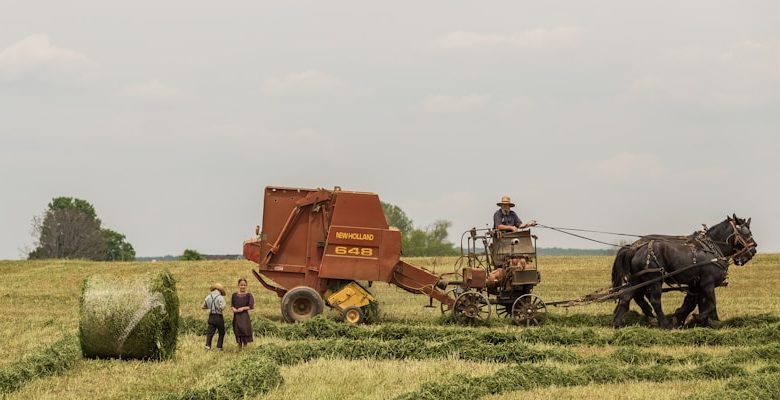How Staking and Yield Farming Influence Token Economics

- Understanding the basics of staking and yield farming
- The impact of staking on token economics
- Yield farming: a new way to generate passive income
- Exploring the risks and rewards of staking and yield farming
- Token economics: the role of staking and yield farming
- Strategies for maximizing returns through staking and yield farming
Understanding the basics of staking and yield farming
Staking and yield farming are two popular ways for cryptocurrency holders to earn passive income. Staking involves locking up a certain amount of tokens to support the network’s operations and validate transactions. In return, stakers receive rewards in the form of additional tokens. On the other hand, yield farming refers to the practice of providing liquidity to decentralized finance (DeFi) protocols in exchange for rewards.
Both staking and yield farming play a crucial role in token economics by incentivizing token holders to actively participate in the network. By staking or yield farming, token holders contribute to the security and liquidity of the network, which ultimately benefits all participants. Additionally, staking and yield farming help to stabilize token prices by reducing sell pressure and increasing demand.
The impact of staking on token economics
Staking plays a crucial role in shaping the token economics of a cryptocurrency. By staking their tokens, users are able to actively participate in securing the network and validating transactions. This process not only incentivizes token holders to actively engage with the platform but also helps in maintaining the overall integrity and security of the blockchain.
One of the key impacts of staking on token economics is the reduction of circulating supply. When users stake their tokens, they lock them up for a certain period of time, thereby reducing the number of tokens available for trading. This scarcity can drive up demand for the token, leading to an increase in its value. Additionally, staking rewards incentivize users to hold onto their tokens for longer periods, further reducing the circulating supply.
Another important aspect of staking is its effect on governance. Many blockchain projects use staking as a way to decentralize decision-making processes, giving more power to those who have a stake in the network. This not only ensures that decisions are made in the best interest of the community but also creates a sense of ownership among token holders.
Overall, staking has a significant impact on the token economics of a cryptocurrency, influencing factors such as supply and demand, governance, and community engagement. By actively participating in staking, users can not only earn rewards but also contribute to the overall growth and success of the platform.
Yield farming: a new way to generate passive income
Yield farming has emerged as a popular way for cryptocurrency holders to generate passive income. It involves users providing liquidity to decentralized finance (DeFi) protocols in exchange for rewards in the form of additional tokens. This process allows individuals to earn a return on their crypto assets without actively trading or investing in traditional financial markets.
Yield farming has gained traction due to its potential for high returns compared to traditional savings accounts or investment vehicles. By participating in various DeFi protocols, users can earn interest, transaction fees, and other incentives based on the amount of liquidity they provide. This has opened up new opportunities for individuals looking to grow their cryptocurrency holdings in a decentralized and automated manner.
While yield farming offers the potential for lucrative returns, it also comes with risks. The DeFi space is known for its volatility and susceptibility to hacks and smart contract vulnerabilities. It is essential for participants to conduct thorough research, assess the risks involved, and only invest what they can afford to lose. Additionally, users should diversify their holdings across different protocols to minimize the impact of potential losses.
In conclusion, yield farming presents a new and innovative way for individuals to generate passive income through their cryptocurrency holdings. By providing liquidity to DeFi protocols, users can earn rewards in the form of additional tokens, interest, and transaction fees. However, it is crucial to approach yield farming with caution, conduct proper due diligence, and diversify investments to mitigate risks in the volatile DeFi space.
Exploring the risks and rewards of staking and yield farming
Exploring the risks and rewards involved in staking and yield farming can provide valuable insights for investors looking to maximize their returns in the cryptocurrency market. Staking involves locking up a certain amount of tokens to support the network and earn rewards in return. This process helps secure the blockchain network and incentivizes token holders to actively participate in the ecosystem.
On the other hand, yield farming allows investors to earn additional tokens by providing liquidity to decentralized finance (DeFi) platforms. By staking their tokens in liquidity pools, investors can earn rewards in the form of fees generated by the platform. However, yield farming comes with its own set of risks, including impermanent loss and smart contract vulnerabilities.
When weighing the risks and rewards of staking and yield farming, it is essential for investors to conduct thorough research and due diligence. Understanding the potential risks involved, such as market volatility and regulatory uncertainty, can help investors make informed decisions and mitigate potential losses. By diversifying their staking and yield farming strategies, investors can maximize their rewards while minimizing their exposure to risk.
Token economics: the role of staking and yield farming
Token economics play a crucial role in shaping the value and functionality of a cryptocurrency. Staking and yield farming are two popular mechanisms that have a significant impact on token economics.
Staking involves users locking up their tokens in a wallet to support the network’s operations. In return, stakers earn rewards in the form of additional tokens. This process helps secure the network and incentivizes holders to actively participate in the ecosystem.
Yield farming, on the other hand, is a strategy used by investors to generate maximum returns on their cryptocurrency holdings. By providing liquidity to decentralized finance (DeFi) platforms, users can earn rewards in the form of tokens or fees.
Both staking and yield farming contribute to the overall token supply and demand dynamics. By incentivizing users to hold or use tokens, these mechanisms can help stabilize prices and increase the token’s value over time.
Furthermore, staking and yield farming can also influence token distribution and governance. By rewarding active participants in the ecosystem, these mechanisms help decentralize control and ensure a more equitable distribution of tokens among users.
In conclusion, staking and yield farming are essential components of token economics that play a vital role in shaping the value, functionality, and governance of cryptocurrencies. By understanding how these mechanisms work, investors can make informed decisions to maximize their returns and contribute to the growth of the ecosystem.
Strategies for maximizing returns through staking and yield farming
When it comes to maximizing returns through staking and yield farming, there are several strategies that can be employed to make the most out of your investment. One key strategy is to diversify your portfolio across different staking pools and yield farming platforms. By spreading your investment across multiple projects, you can reduce the risk of potential losses if one of the projects underperforms.
Another important strategy is to stay informed about the latest developments in the staking and yield farming space. By keeping up to date with news and trends, you can make informed decisions about when to enter or exit a particular staking pool or yield farming platform. This can help you maximize your returns and minimize potential losses.
It is also essential to pay attention to the fees associated with staking and yield farming. Some platforms may charge high fees, which can eat into your profits. By carefully researching and comparing the fees of different platforms, you can choose the ones that offer the best returns with the lowest fees.
Additionally, it is crucial to consider the risks involved in staking and yield farming. While these strategies can be highly profitable, they also come with inherent risks. It’s essential to do your due diligence and assess the risks before committing to any staking or yield farming activity. This will help you make more informed decisions and protect your investment.



